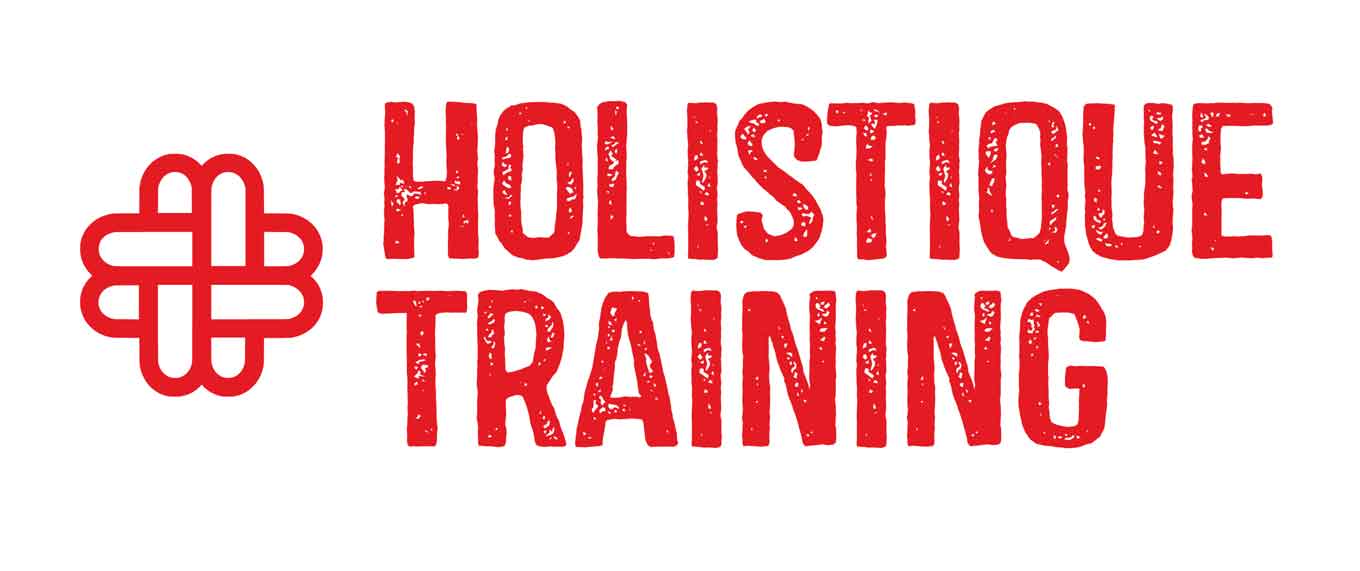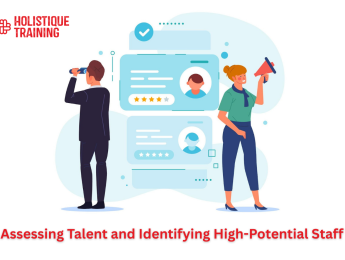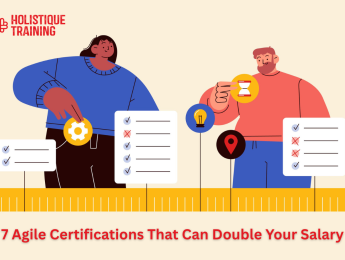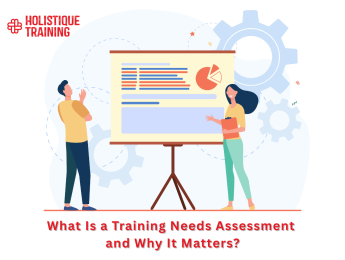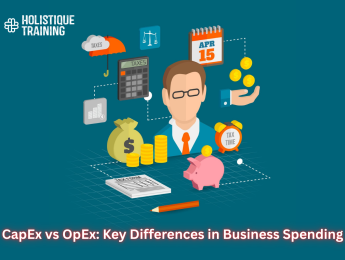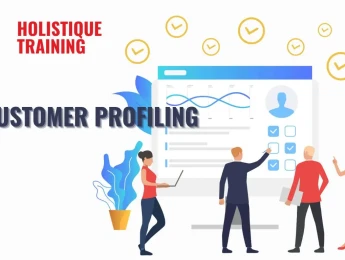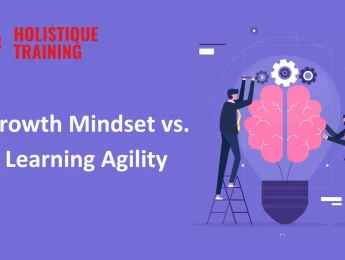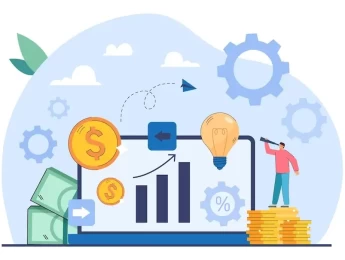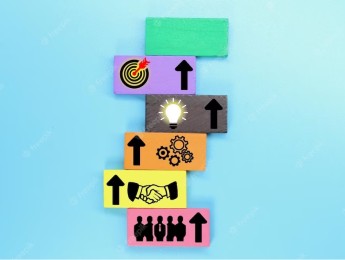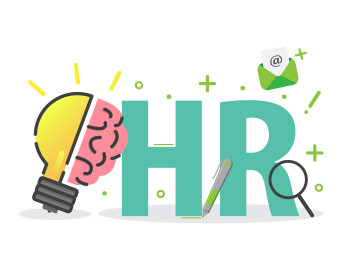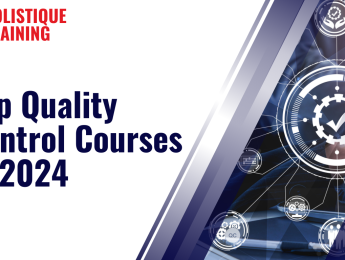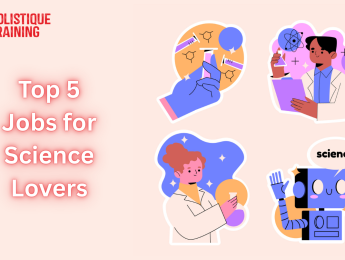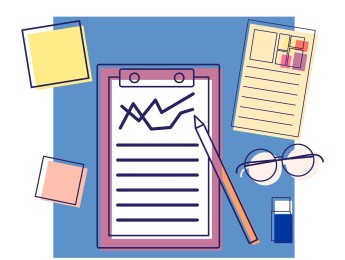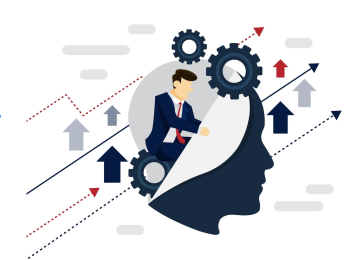- Table of Contents
- Introduction
- What is Talent Assessment?
- What is a HiPo Employee?
- Difference Between High Potential and High Performing Employees
- Why is Talent Assessment Important in Identifying High Potential Employees?
- 1. Objective Evaluation of Employees
- 2. Identifying Hidden Potential
- 3. Strategic Workforce Planning
- 4. Retaining Top Talent
- 5. Maximizing ROI on Talent Development
- 6. Building a Competitive Advantage
- 7. Supporting Diversity and Inclusion
- 8. Mitigating Risks of Misidentification
- Talent Assessment and Skills-Based Hiring
- How t Conduct a Talent Assessment
- 1. Define Key Criteria for Success
- 2. Use a Variety of Assessment Methods
- 3. Evaluate Both Performance and Potential
- 4. Identify Strengths and Development Gaps
- 5. Create Personalized Development Plans
- 6. Communicate Results Transparently
- 7. Monitor Progress and Reassess Regularly
- 8. Align the Process with Organizational Goals
- High Potential Assessment Tools
- 1. Nine-Box Grid
- 2. Psychometric Assessments
- 3. 360-Degree Feedback
- 4. Behavioral Assessments
- 5. Leadership Simulations
- 6. Employee Engagement and Motivation Surveys
- Leadership Development for High Potential Employees
- 1. Individual Development Plans (IDPs)
- 2. Stretch Assignments
- 3. Mentorship and Coaching
- 4. Leadership Training Programs
- 5. Cross-Functional Exposure
- 6. Networking Opportunities
- 7. Feedback and Self-Reflection
- Conclusion
Introduction
Organizations thrive on the strength of their people. Behind every breakthrough, every milestone, and every innovation lies a team of talented individuals who push boundaries and drive growth. But not all employees contribute to an organization in the same way or at the same capacity. Some individuals possess unique capabilities and untapped potential that, when nurtured, can lead to extraordinary contributions. These individuals are known as high-potential employees (HiPos). Identifying and developing these individuals is a critical strategy for organizations aiming to secure their future. This blog delves into the concept of talent assessment and its role in identifying and cultivating high-potential employees.
What is Talent Assessment?
Talent assessment is a systematic process used by organizations to evaluate the skills, competencies, and potential of their employees. It goes beyond merely measuring performance; it seeks to uncover an individual's strengths, areas for improvement, and, most importantly, their capacity for growth.
This process can take many forms, including interviews, psychometric tests, 360-degree feedback, behavioral assessments, and performance reviews. The goal is to create a comprehensive understanding of an employee's abilities and how they align with the organization's needs and long-term objectives.
Talent assessment is not just about identifying who is currently excelling in their role. It’s about looking deeper—analyzing who has the potential to take on greater responsibilities, adapt to new challenges, and lead the organization into the future.
What is a HiPo Employee?
A high-potential employee, or HiPo, is someone who demonstrates the ability to grow into leadership roles or positions of greater responsibility within an organization. These individuals are not just strong performers; they exhibit qualities that suggest they can take on broader, more complex challenges and succeed in them.
HiPos are often characterized by the following traits:
- Learning Agility: HiPos have an exceptional ability to learn from experiences and apply that knowledge to new and unfamiliar situations. They are curious, adaptable, and open to feedback.
- Emotional Intelligence: They possess strong interpersonal skills, including self-awareness, empathy, and the ability to build meaningful relationships.
- Drive and Motivation: HiPos are highly motivated to achieve their goals and often go above and beyond what is expected of them. They are proactive and take initiative.
- Resilience: They can navigate setbacks and challenges with grace, maintaining focus and determination even in difficult circumstances.
- Strategic Thinking: HiPos think beyond the immediate task at hand. They understand the bigger picture and can align their work with the organization’s long-term goals.
- Influence and Leadership Potential: Even if they are not in formal leadership roles, HiPos naturally inspire and influence others.
It’s important to note that while HiPos often excel in their current roles, their defining characteristic is their potential for future growth and leadership.
Difference Between High Potential and High Performing Employees
The terms “high potential” and “high performing” are often used interchangeably, but they represent two distinct categories of employees. While there is some overlap, it’s crucial to understand the difference:
- High Performing Employees: These individuals consistently deliver excellent results in their current roles. They are reliable, skilled, and often specialists in their field. High performers are essential for maintaining operational excellence and achieving short-term goals.
- High Potential Employees: While HiPos may also be high performers, their distinguishing feature is their capacity to take on greater responsibilities in the future. They possess the traits and skills needed to succeed in roles that require more complexity, strategic thinking, and leadership.
Criteria | High Performing Employees | High Potential Employees |
Focus | Excel in their current roles and deliver consistent results. | Show potential to take on future leadership roles and broader responsibilities. |
Skill Set | Specialized in their field with strong technical expertise. | Versatile and adaptable, with the ability to learn new skills quickly. |
Growth Trajectory | May not seek or be suited for higher-level roles. | Demonstrates readiness and ambition for leadership and strategic roles. |
Learning Agility | Comfortable with existing processes and routines. | Highly adaptable, curious, and eager to learn from new experiences. |
Leadership Potential | May not naturally inspire or influence others. | Exhibits strong interpersonal skills and the ability to lead and motivate teams. |
An employee can be a high performer without being a HiPo. For example, someone might excel in their technical role but lack the adaptability or leadership qualities needed for higher-level positions. Conversely, a HiPo may not yet be performing at the highest level in their current role but shows clear signs of having the potential to grow into a leadership position.
Why is Talent Assessment Important in Identifying High Potential Employees?
Identifying HiPos is not just a matter of intuition or guesswork. It requires a structured approach, which is where talent assessment comes in. Here’s why talent assessment is essential for identifying HiPos:
1. Objective Evaluation of Employees
One of the biggest challenges in identifying HiPos is the risk of bias in decision-making. Managers may unintentionally favor employees they work closely with or those who share similar traits or work styles. Talent assessment eliminates this subjectivity by providing a data-driven framework to evaluate employees. Using tools like psychometric assessments, 360-degree feedback, and performance reviews ensures that decisions are based on measurable criteria rather than personal preferences.
2. Identifying Hidden Potential
HiPos don’t always stand out immediately. Some employees may not yet have had the opportunity to showcase their potential due to the nature of their current roles or a lack of exposure to challenging projects. Talent assessment helps uncover this hidden potential by evaluating traits like learning agility, adaptability, and problem-solving skills—qualities that may not be evident in day-to-day tasks but are critical for leadership success. This is especially important when considering that research shows 66% of employers believe applicants exaggerate their skills on resumes, and 78% of job seekers admit to stretching the truth about their abilities and experience. By relying on thorough assessments rather than surface-level impressions, organizations can identify genuine high-potential talent and invest in their development with confidence.
3. Strategic Workforce Planning
Organizations need to think beyond the present and plan for the future. Talent assessment provides insights into who has the potential to step into leadership roles when the need arises. This ensures a strong succession pipeline, minimizing disruptions caused by leadership transitions. By proactively identifying HiPos, organizations can prepare for future challenges and maintain continuity in their operations.
4. Retaining Top Talent
High-potential employees are often ambitious and eager to grow. If their potential goes unrecognized or they feel undervalued, they may seek opportunities elsewhere. Talent assessment not only identifies HiPos but also signals to them that the organization values their contributions and is willing to invest in their growth. This recognition can significantly boost employee engagement and retention, reducing the risk of losing top talent to competitors.
5. Maximizing ROI on Talent Development
Investing in employee development can be costly, so it’s important to allocate resources wisely. Talent assessment helps organizations focus their development efforts on employees who are most likely to deliver long-term value. By targeting HiPos for leadership training and other growth opportunities, organizations can ensure that their investments yield the highest possible return.
6. Building a Competitive Advantage
In today’s fast-paced and ever-changing business environment, the ability to adapt and innovate is crucial. HiPos, with their learning agility and strategic thinking, are uniquely positioned to drive change and innovation. By identifying and nurturing these individuals through talent assessment, organizations can build a competitive advantage and stay ahead of their peers.
7. Supporting Diversity and Inclusion
Talent assessment can also help organizations identify HiPos from diverse backgrounds who might otherwise be overlooked. By using objective criteria and standardized tools, organizations can ensure that their talent identification process is fair and inclusive. This not only strengthens the leadership pipeline but also fosters a culture of equity and representation.
8. Mitigating Risks of Misidentification
Without a formal talent assessment process, organizations run the risk of misidentifying employees as HiPos based solely on their current performance. This can lead to investing in employees who may not have the capacity or desire to grow into leadership roles, while overlooking those who do. Talent assessment minimizes this risk by providing a comprehensive evaluation of both performance and potential.
In summary, talent assessment is a cornerstone of effective talent management. It ensures that organizations are not just filling positions with competent employees but are actively identifying and cultivating the leaders of tomorrow. By leveraging structured assessment methods, organizations can unlock the full potential of their workforce, secure their future, and create a culture where talent is recognized and nurtured.
Talent Assessment and Skills-Based Hiring
In today’s rapidly evolving workplace, traditional hiring methods that rely heavily on resumes and degrees are proving insufficient for identifying true talent. Skills-based hiring is emerging as a more effective approach, focusing on what candidates can do rather than solely on their credentials. By assessing specific competencies, problem-solving abilities, and adaptability, organizations can make more informed decisions and identify candidates with the potential to excel in their roles.
Talent assessment plays a critical role in this shift. These tools not only help identify high-potential employees already within the organization but also ensure that new hires align with the skills and values needed for long-term success. This approach is not just about finding the right fit for a role—it’s about building a workforce that can adapt and thrive in an ever-changing business environment.
The benefits of skills-based hiring extend beyond recruitment. Research shows that 94% of companies that transitioned to skills-based hiring reported improved employee retention. This highlights the value of hiring based on real capabilities, as employees who feel their skills are recognized and utilized are more likely to stay engaged and committed to the organization. By integrating talent assessments with skills-based hiring practices, businesses can create a more dynamic, capable, and loyal workforce while fostering a culture of growth and development.
How to Conduct a Talent Assessment
Conducting a talent assessment is a strategic process that allows organizations to identify the strengths, weaknesses, and growth potential of their employees. It’s more than just a checklist or a one-time evaluation—it requires careful planning, a variety of tools, and a commitment to fairness and objectivity. When done effectively, a talent assessment helps organizations pinpoint high-potential employees (HiPos) and align their workforce with both current and future business needs. Below is a detailed guide to conducting a talent assessment:
1. Define Key Criteria for Success
Before beginning the assessment, it’s essential to establish clear criteria for what constitutes success in your organization. This means identifying the competencies, skills, and traits that are most valuable for your business goals.
- Competencies: These might include leadership ability, problem-solving skills, strategic thinking, emotional intelligence, and adaptability.
- Skills: Technical expertise, communication skills, and project management abilities are often critical for success in specific roles.
- Potential Indicators: Traits like learning agility, resilience, and ambition are key markers of high-potential employees.
By defining these criteria upfront, you create a consistent framework for evaluating employees and ensure that everyone is assessed against the same standards.
2. Use a Variety of Assessment Methods
A comprehensive talent assessment involves gathering data from multiple sources to get a well-rounded view of an employee’s abilities and potential. Relying on a single method can lead to incomplete or biased results. Here are some commonly used methods:
- Performance Reviews: Evaluate an employee’s past achievements and how effectively they’ve met their goals. While this provides insight into current performance, it should not be the sole determinant of potential.
- 360-Degree Feedback: Collect feedback from an employee’s peers, subordinates, and supervisors to gain a holistic understanding of their strengths and areas for improvement.
- Psychometric Assessments: These tests measure cognitive abilities, personality traits, and emotional intelligence, providing insights into an employee’s potential for growth and leadership.
- Behavioral Assessments: Observe how employees respond to real-world challenges, such as conflict resolution, decision-making under pressure, and team collaboration.
- Self-Assessments: Allow employees to reflect on their own strengths, weaknesses, and career aspirations. This can provide valuable context and help align their goals with organizational needs.
By combining these methods, you can create a more accurate and nuanced picture of each employee’s capabilities and potential.
3. Evaluate Both Performance and Potential
A common mistake in talent assessment is focusing solely on an employee’s current performance. While high performance is important, it doesn’t necessarily indicate high potential. To evaluate potential, consider factors like:
- Learning Agility: How quickly can the employee adapt to new situations and acquire new skills?
- Ambition: Does the employee show a desire to grow and take on greater responsibilities?
- Emotional Intelligence: Can they build strong relationships, manage conflicts, and inspire others?
- Resilience: How well do they handle setbacks and challenges?
By assessing both performance and potential, you can differentiate between employees who are excelling in their current roles and those who have the capacity to grow into leadership positions.
4. Identify Strengths and Development Gaps
Once the assessments are complete, analyze the results to identify each employee’s strengths and areas for improvement. This step is crucial for understanding how employees align with the organization’s needs and what support they might require to reach their full potential.
- Strengths: Highlight the skills and traits that make the employee valuable to the organization.
- Development Gaps: Identify the areas where the employee needs additional training, mentorship, or experience to succeed in future roles.
For example, an employee may have strong technical expertise but lack the strategic thinking skills needed for a leadership role. Recognizing this gap allows you to create a targeted development plan.
5. Create Personalized Development Plans
The results of the talent assessment should not just be used to categorize employees—they should serve as the foundation for action. Create individualized development plans for high-potential employees that address their specific needs and prepare them for future roles.
- Training Programs: Enroll employees in workshops, seminars, or online courses to build specific skills.
- Stretch Assignments: Assign challenging projects or roles that push employees out of their comfort zones and help them develop new competencies.
- Mentorship: Pair employees with experienced leaders who can provide guidance, share insights, and offer support.
- Cross-Functional Exposure: Rotate employees through different departments to broaden their understanding of the organization and develop a more holistic perspective.
These development plans should be regularly reviewed and updated based on the employee’s progress and changing organizational needs.
6. Communicate Results Transparently
Transparency is key to building trust and ensuring that employees feel valued throughout the assessment process. Share the results of the assessment with employees in a constructive and supportive manner.
- Provide Feedback: Highlight their strengths and explain how their skills align with the organization’s goals.
- Discuss Development Opportunities: Outline the steps they can take to grow within the organization and achieve their career aspirations.
- Encourage Dialogue: Give employees the opportunity to ask questions, share their thoughts, and express their own career goals.
This open communication fosters a sense of collaboration and ensures that employees are engaged in their own development journey.
7. Monitor Progress and Reassess Regularly
Talent assessment is not a one-time event—it’s an ongoing process. Employees grow and change over time, and their potential should be reassessed periodically to ensure that development plans remain relevant.
- Track Progress: Use performance reviews and regular check-ins to monitor how employees are progressing toward their goals.
- Update Development Plans: Adjust plans based on new challenges, opportunities, or changes in the employee’s role.
- Reassess Potential: Conduct follow-up assessments to evaluate how employees have grown and whether they are ready for greater responsibilities.
This continuous approach ensures that the organization remains agile and responsive to both employee development and business needs.
8. Align the Process with Organizational Goals
Finally, ensure that your talent assessment process is aligned with the organization’s strategic objectives. The ultimate goal of talent assessment is to build a workforce that can drive the organization’s success, both now and in the future.
- Succession Planning: Use the assessment results to identify candidates for key leadership roles and create a pipeline of future leaders.
- Workforce Optimization: Align employees’ skills and potential with the roles and responsibilities that best suit them.
- Cultural Fit: Ensure that the assessment process identifies employees who embody the organization’s values and contribute to a positive workplace culture.
By following these steps, organizations can conduct a thorough and effective talent assessment that not only identifies high-potential employees but also empowers them to grow and succeed. This process is an investment in the organization’s future, ensuring that it has the right people in the right roles to navigate challenges, seize opportunities, and achieve long-term success.
High Potential Assessment Tools
High potential assessment tools are essential for identifying employees who have the capacity to grow into leadership roles and take on greater responsibilities. These tools provide organizations with objective data, helping to eliminate bias and ensure that decisions are based on measurable criteria. By using these tools, businesses can gain deeper insights into an employee’s abilities, personality traits, and leadership potential. Below are some of the most effective tools and methods for assessing high-potential employees:
1. Nine-Box Grid
The nine-box grid is a simple yet powerful tool that evaluates employees based on two dimensions: performance and potential. Employees are plotted into one of nine categories, ranging from low performance/low potential to high performance/high potential. This visual framework makes it easy to identify HiPos, who typically fall into the "high performance/high potential" quadrant. The nine-box grid encourages discussions about talent development and succession planning, helping organizations focus their efforts on employees with both strong current contributions and future leadership capabilities.
2. Psychometric Assessments
Psychometric assessments are standardized tests designed to measure an individual’s cognitive abilities, personality traits, and emotional intelligence. These tests are particularly useful for evaluating qualities like problem-solving skills, adaptability, and interpersonal effectiveness—key indicators of high potential. For example, cognitive ability tests assess how quickly individuals can learn and apply new information, while personality tests provide insights into their leadership style and resilience. By offering objective and data-driven results, psychometric assessments help organizations make informed decisions about who to invest in for future leadership roles.
3. 360-Degree Feedback
360-degree feedback collects input from an employee’s peers, subordinates, and supervisors to provide a comprehensive view of their strengths and development areas. This tool is especially useful for evaluating interpersonal and leadership skills, as it highlights how the employee is perceived by those they work with daily. High-potential employees often stand out in 360-degree feedback as individuals who inspire trust, build strong relationships, and effectively influence others. By incorporating multiple perspectives, this tool reduces bias and creates a more balanced assessment of an employee’s potential.
4. Behavioral Assessments
Behavioral assessments evaluate how employees respond to specific situations, providing insights into their decision-making, problem-solving, and leadership capabilities. These assessments often simulate real-world challenges, such as resolving conflicts, managing teams, or navigating organizational change. HiPos typically demonstrate resilience, adaptability, and the ability to remain composed under pressure during these exercises. Behavioral assessments are particularly valuable for identifying employees who may not yet be in leadership roles but show strong potential for handling complex responsibilities in the future.
5. Leadership Simulations
Leadership simulations immerse employees in realistic scenarios that mimic the challenges they might face in higher-level roles. These exercises test their ability to think strategically, make decisions with limited information, and lead teams effectively. For example, a simulation might involve managing a crisis, launching a new product, or handling a significant organizational change. HiPos often excel in these simulations by demonstrating strong critical thinking, collaboration, and communication skills. Leadership simulations provide a practical way to assess how employees will perform in future roles, making them a valuable tool for talent assessment.
6. Employee Engagement and Motivation Surveys
While engagement surveys are often used to measure overall employee satisfaction, they can also provide valuable insights into potential. High-potential employees tend to exhibit higher levels of engagement and motivation, as they are often driven by a desire to grow and contribute meaningfully to the organization. These surveys can help identify individuals who are not only committed to their roles but also eager to take on new challenges. When combined with other assessment tools, engagement surveys can help organizations spot employees with the ambition and drive needed for leadership positions.
By leveraging these tools, organizations can create a comprehensive and objective process for identifying high-potential employees. Each tool offers unique insights, and when used together, they provide a well-rounded understanding of an employee’s capabilities and potential. This enables organizations to make informed decisions about talent development and build a strong pipeline of future leaders.
Leadership Development for High Potential Employees
Leadership development is a critical investment for high-potential employees (HiPos) as it prepares them to take on greater responsibilities and succeed in future leadership roles. HiPos often possess the raw talent and ambition needed for leadership, but they require targeted development to refine their skills, expand their knowledge, and build the confidence to lead effectively. However, while 77% of business leaders agree that organizations should help employees become more employable through relevant skills, only 5% strongly believe they are investing enough in skill development to adapt to the evolving workplace. A well-structured leadership development program not only benefits the individual but also ensures the organization has a strong pipeline of capable leaders. Below are key strategies and approaches for developing leadership skills in high-potential employees:
1. Individual Development Plans (IDPs)
An Individual Development Plan (IDP) is a personalized roadmap that outlines the specific skills, experiences, and goals an employee needs to develop to prepare for leadership roles. These plans are tailored to the unique strengths and gaps of each HiPo, ensuring that their development aligns with both their career aspirations and the organization’s needs. IDPs typically include a mix of formal training, on-the-job learning, and mentoring opportunities. By providing a clear path for growth, IDPs keep HiPos motivated and focused on achieving their leadership potential.
2. Stretch Assignments
Stretch assignments involve giving HiPos challenging projects or roles that push them out of their comfort zones and require them to develop new skills. For example, a stretch assignment might involve leading a cross-functional team, managing a high-stakes project, or taking on responsibilities outside their usual area of expertise. These experiences help HiPos build confidence, improve their problem-solving abilities, and develop the strategic thinking skills needed for leadership. Stretch assignments are one of the most effective ways to accelerate the growth of high-potential employees.
3. Mentorship and Coaching
Pairing HiPos with experienced mentors or leadership coaches provides them with invaluable guidance and support as they navigate their development journey. Mentors can share insights from their own experiences, offer advice on overcoming challenges, and help HiPos build their professional networks. Coaches, on the other hand, focus on developing specific leadership competencies, such as communication, decision-making, and emotional intelligence. Both mentorship and coaching foster personal growth, enhance self-awareness, and help HiPos gain the skills and perspective needed to become effective leaders.
4. Leadership Training Programs
Formal leadership training programs are designed to equip HiPos with the foundational knowledge and skills required to succeed in leadership roles. These programs often cover topics such as strategic planning, team management, conflict resolution, and organizational change. Training can be delivered through workshops, online courses, or leadership academies, and it is often supplemented with real-world applications. By participating in these programs, HiPos gain a deeper understanding of what it takes to lead effectively and how to apply these principles in their roles.
5. Cross-Functional Exposure
Providing HiPos with opportunities to work across different departments or functions broadens their understanding of the organization and helps them develop a more strategic perspective. This exposure allows them to see how various parts of the business operate and how decisions in one area impact the overall organization. For example, a marketing professional might spend time working in operations or finance to gain a more holistic view of the company. Cross-functional experiences not only enhance business acumen but also prepare HiPos to lead diverse teams and make informed decisions at higher levels.
6. Networking Opportunities
Encouraging HiPos to build relationships with other leaders, both within and outside the organization, helps them expand their perspectives and learn from the experiences of others. Networking opportunities might include attending industry conferences, participating in leadership forums, or joining professional associations. These interactions expose HiPos to new ideas, best practices, and potential mentors, while also helping them build the confidence to operate in high-level professional circles. Networking is an essential component of leadership development, as it equips HiPos with the connections and insights needed to succeed in complex environments.
7. Feedback and Self-Reflection
Regular feedback and opportunities for self-reflection are crucial for helping HiPos understand their progress and identify areas for improvement. Feedback can come from managers, peers, mentors, or even self-assessment tools, and it should be constructive, actionable, and focused on growth. Encouraging HiPos to reflect on their experiences and challenges helps them develop greater self-awareness and a deeper understanding of their leadership style. This continuous feedback loop ensures that HiPos remain on track and committed to their development goals.
By implementing these strategies, organizations can create a robust leadership development program that empowers high-potential employees to grow into confident, capable leaders. Investing in HiPos not only enhances their individual performance but also strengthens the organization’s ability to adapt, innovate, and thrive in the face of future challenges.
Conclusion
The ability to identify and nurture high-potential employees is a transformative advantage for organizations. HiPos are not just talented individuals—they are the leaders of tomorrow, the visionaries who will drive innovation, inspire teams, and navigate organizations through both opportunities and challenges. Recognizing and developing these employees takes more than intuition; it requires strategic talent assessment and a commitment to providing the right development opportunities.
Comprehensive talent assessments form the foundation of this process, offering the tools and insights needed to recognize potential and invest in it wisely. By leveraging proven methods like psychometric evaluations, leadership simulations, and 360-degree feedback, organizations can identify HiPos with precision. But identifying potential is only the first step. The true game-changer lies in nurturing that potential through targeted initiatives such as stretch assignments, cross-functional exposure, and personalized development plans. These efforts not only build a strong leadership pipeline but also ensure the organization’s long-term success by preparing its people to lead in an ever-evolving business landscape.
The journey from identifying a HiPo to developing them into a leader is rarely straightforward, but it is undoubtedly one of the most rewarding investments an organization can make. After all, the future of any organization lies in the hands of its people—and the brightest futures belong to those who know how to recognize, cultivate, and empower talent.
To help you master this critical process, we invite you to explore our course Competency & Value Development & Implementation. This comprehensive program equips you with the knowledge and tools to design and implement effective competency frameworks, assess talent accurately, and create impactful development strategies. Whether you’re looking to refine your current approach or build a robust system from the ground up, this course will empower you to unlock the full potential of your workforce and secure your organization’s future. Take the next step in building a culture of leadership excellence—enroll today!
